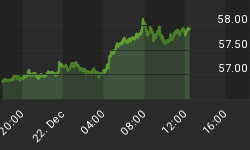The US trade deficit rose 4% in October to a record $68.9 billion from 66.0 billion in September. Imports grew 2.7% to $176.4 bln -- the highest percentage rise since Oct 04 -- while exports rose 1.7% to $107.5 billion.
Despite the aggregate 15% in crude oil prices in September and October, imports of petroleum products jumped 7.8% to $25.8 bln, while imports of crude oil rebounded by 7% to $17.1 billion, helped by a 9% jump in volume, following the reopening of the ports in the South East - particularly New Orleans. Of significance is the increased in the share of petroleum imports as a percentage of total imports to a record 14%. In addition, the increase in petroleum imports accounted for 40% of the increase in total imports.

The October month-to-month US bilateral trade gap deteriorated to new records across with the board. The trade deficit with the China edged up 2.0% to a $20.5 bln from September, while soaring 22% from October 2004.The deficit with Japan rose 15% to $7.4 bln while the year-on-year increased 16%. The trade gap with the UK and the Eurozone rose 29% and 21% to $1.6 bln and $8.8 bln respectively. The trade gap with Canada and Mexico rose 10% and 11% to $8.1 bln and $4.8 bln respectively. The US trade deficit with OPEC rose 4% to $9.4 bln, a 32% increase from a year ago.
Today's trade report raises the question whether the US deficit is showing its periodic increase after a 10-12 month consolidation around the $55-58 billion mark. The monthly deficit figures have a way of consolidating in a range for 6-12 months before a given catalyst lifts it up to the next range. Since Jan 2002, this catalyst has been the increase in oil prices. We noted last month that the prospects of a retreat back to the low $60s are primarily dependent on the extent of aircraft exports and crude oil imports (rather than solely petroleum). But today's report was largely a function of high oil imports (despite falling oil prices) and for autos and electronics. The 12% jump the September trade deficit was largely triggered by an unexpectedly large 2.4% drop in exports. In the October report, exports did pick up 1.7% but it was not enough to keep up with the 2.7% increase in imports, which was the highest in 6 months.
The US external imbalance will reemerge later this week amid the Friday release of the Q3 current account deficit, which we expect to push up to $198 bln from $195.7 bln in Q2, but less than the consensus forecasts of $203 bln. That is because the trade gap is seen temporarily stabilizing due to a boost in unilateral transfers from insurance and reinsurance claims received by US companies from foreign insurance. The unilateral account should also be boosted by donations from abroad for hurricane relief.
Fed's Rethinking of Rate Hikes + Deteriorating Trade picture = Worst of both worlds for US dollar
The renewed acceleration in the US trade deficit and the looming conclusion of the Fed's tightening campaign both conspire to stand in the way of the dollar's yield-based rally, and should accelerate selling momentum in the currency in the short-term.
Reiterating our interpretation of yesterday's FOMC statement; the door does remain open for further rate hikes. But what is different this time is the lack of conviction by the Fed for further rate hikes and the removal of positive language, which does not make a January rate hike a 100% certainty as was the case in each of the past 13 meetings. In other words, the language was changed in a way that increases the Uncertainty going into the next meetings, unlike was the case in previous meetings. Said differently, when looking at the FOMC statement, we always saw an ensuing rate hike. Today's altered language makes way for the possibility of a rate hike as well as for a pause.
In the shorter-term, we stick with our year-end EURUSD forecast of $1.1950 before a renewed push towards the $1.2300 by mid Q1. We see a 60% chance for a January 25-bp rate hike to 4.50%, that will be followed by a rate cut in Q4, bringing down the Fed funds rate back to 4.25% by end of 2006. Our year-end USDJPY forecast stands at 117, while faster selling is expected to stabilize at 113 as the unwinding of the carry trades is accelerated, especially as Treasury-bound Japanese institutions begin to hedge their dollar longs.















